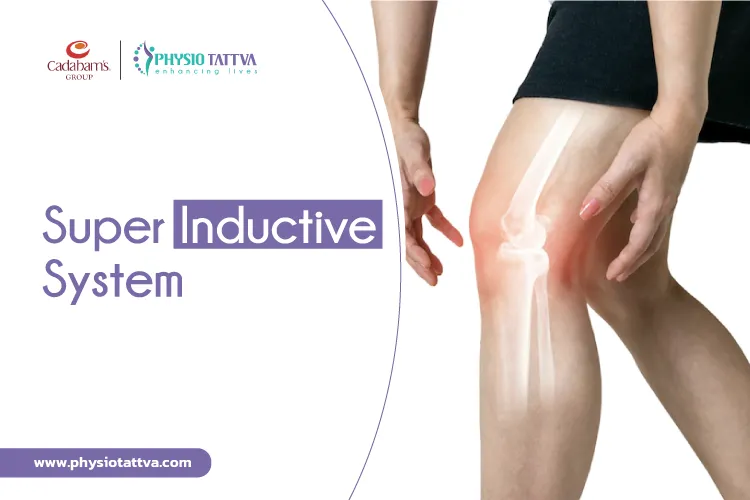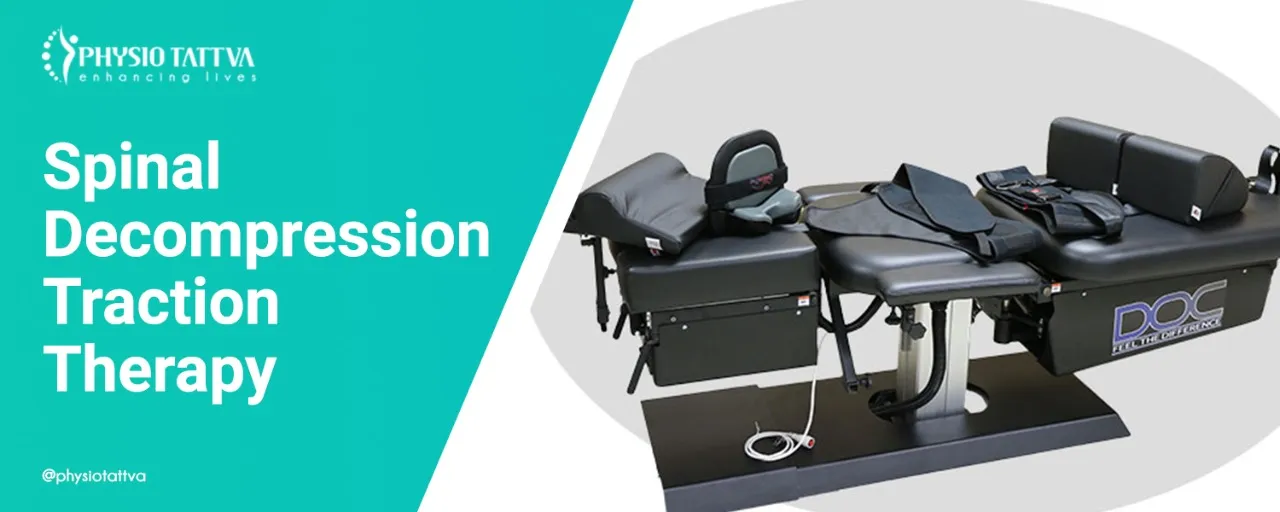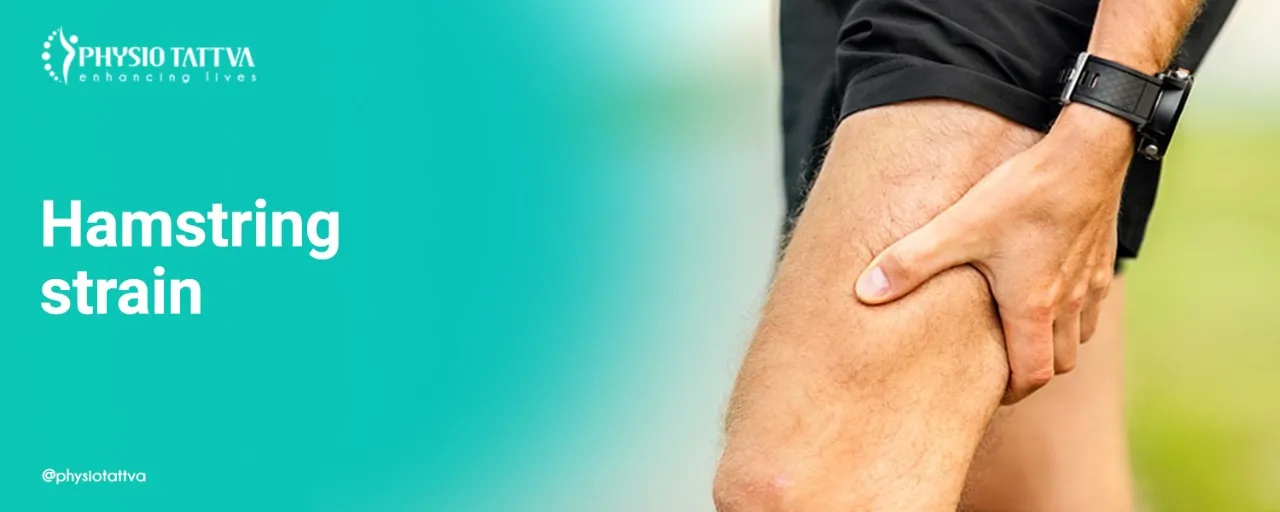What is Wax Therapy?
Wax therapy is a deep heat treatment method wherein applying heat improves mobility by heating the connective tissues. The therapy uses molten paraffin wax application to the connecting tissues, causing the muscles to relax. This therapeutic treatment is primarily used for pain in the hands and feet. Combining the therapy with personalised exercises and other mobilising techniques can help. This process improves joint mobility by enhancing the mobility of the joints.
The therapists in hospitals apply molten wax on the arms and legs based on the doctor's prescription and assist in reducing stiffness and help in movement before exercises. It is a safe technique but should only be applied at home with supervision. It is one of the most effective methods of using heat to connective tissues and improving mobility.
History of Wax Therapy
The history of wax therapy dates back to ancient times, when it was used for medicinal and cultural purposes in different cultures. In Europe, wax therapy was used to reduce inflammation and pain during the Middle Ages. In India, wax therapy was used for massage as a means of relaxation. Wax was also used in spiritual ceremonies in Mexico and Central America.
Medical references from early 20th-century physiotherapy texts highlight the use of paraffin wax baths to treat arthritis and musculoskeletal stiffness, especially in rehabilitation after World War I. Over time, wax therapy evolved into a mainstream supportive modality in physiotherapy for managing chronic pain and joint mobility.
Types of Wax Therapy
There are several effective ways to apply wax therapy depending on the condition being treated, the body part involved, and the therapist’s approach. Each method uses heat to deliver the therapeutic effects of a paraffin wax bath and improve mobility, circulation, or skin health.
- Dipping Method: In this classic paraffin wax bath therapy, the hand or foot is repeatedly dipped into melted wax until multiple layers form a thick, insulating coat. This therapeutic wax bath locks in heat and is particularly helpful for joint stiffness and pain relief.
- Brush Application: Ideal for targeting smaller or uneven areas, this method involves using a brush to apply hot wax in layers over affected joints. Often used for wax therapy in physiotherapy, it’s a controlled way to deliver localised heat.
- Pouring Method: In this approach, molten wax is poured gently over the treatment area, followed by wrapping with a towel to retain heat. It’s especially useful in wax bath therapy in physiotherapy for broader pain relief in areas like the arms or legs.
- Towel Wrapping Method: Here, towels or bandages are dipped into hot wax and wrapped around the targeted body part. Commonly used in hot wax treatment for knee pain, this method ensures deeper heat penetration and sustained therapeutic warmth.
- Immersion Method: The body part (usually a hand or foot) is immersed directly into a paraffin wax bath, forming a uniform wax layer. It is a simple and effective form of physiotherapy wax application for enhancing blood flow and flexibility in small joints.
- Natural Ingredient Wax Therapy: Modern wax therapy often incorporates botanical waxes infused with ingredients like jojoba oil, coconut oil, shea butter, or argan oil. These not only deliver therapeutic heat but also nourish dry skin and improve surface hydration, making it beneficial for both pain relief and skincare.
How Paraffin Wax Therapy Works
Paraffin wax therapy uses heat to provide deep tissue relief by enhancing circulation, reducing stiffness, and easing muscular discomfort. The mechanism is based on heat transfer and vasodilation, allowing it to act as an effective wax for pain relief in a clinical physiotherapy setting. Here's how this therapeutic wax bath works:
- Heat Transfer through Melted Wax: During wax therapy, melted paraffin wax is applied to the affected area. As the wax cools and solidifies, it releases heat into the tissues below, gradually increasing the local temperature. This sustained warmth enhances flexibility in joints and soft tissues.
- Vasodilation Improves Blood Flow: The gentle heat causes vasodilation—the widening of blood vessels—leading to improved circulation. This allows more oxygen and nutrients to reach the targeted area, aiding in healing and reducing inflammation.
- Relieves Muscle Spasms and Joint Stiffness: The warmth from the paraffin wax bath helps calm overactive nerves and soothe muscle spasms. It also loosens stiff joints, especially in the hands, knees, and feet, which is why hot wax treatment for knee pain is often recommended.
- Deep Tissue Relaxation and Mobility: The heat penetrates deep into tissues, providing a natural analgesic effect. This results in increased mobility, making physiotherapy wax an excellent pre-treatment option before guided exercises in a rehab programme.
- Moisture Retention and Skin Nourishment: Along with therapeutic benefits, the wax locks in moisture, softening the skin. This makes hot wax hand treatment a dual-purpose solution for both healing and hydration.
This process not only supports pain relief but also enhances the effectiveness of wax therapy in physiotherapy by preparing the body for active rehabilitation.
Benefits of Wax Therapy
Wax therapy in physiotherapy offers a wide range of therapeutic and cosmetic benefits, making it a trusted method for pain relief, mobility enhancement, and skin nourishment. By applying heated paraffin wax, this hot wax treatment delivers both comfort and functional recovery. Below are the key advantages explained in detail.
Cosmetic Benefits of Wax Therapy
Paraffin wax bath therapy is highly effective for improving skin texture and hydration, particularly in individuals with dry, cracked, or hardened skin.
- Exfoliates Dead Skin: As paraffin wax cools and is peeled off, it lifts away dead skin cells, dirt, and surface impurities, leaving the skin smooth and rejuvenated.
- Softens Skin: The wax’s emollient properties deeply hydrate the skin, making it noticeably softer. This is especially beneficial for those with scleroderma or calloused hands and feet.
- Locks in Moisture: The hot wax hand treatment creates a barrier over the skin, trapping in moisture and improving skin elasticity.
- Improves Appearance: With regular use, the skin becomes more radiant, reducing rough patches and improving overall appearance.
Therapeutic Benefits of Wax Therapy
The therapeutic wax bath is widely used in rehabilitation and pain management due to its ability to address musculoskeletal and joint-related issues.
- Reduces Joint Stiffness: The heat from the wax helps loosen stiff joints, improving mobility and flexibility.
- Relieves Chronic Pain: Used as a wax for pain relief, it alleviates discomfort in conditions like fibromyalgia, rheumatoid arthritis, and osteoarthritis.
- Improves Blood Circulation: The warmth stimulates vasodilation, enhancing oxygen and nutrient delivery to damaged tissues.
- Eases Muscle Spasms: The heat relaxes tight muscles, reducing spasms and strain-related pain.
- Prepares for Physiotherapy: It’s an effective precursor to exercises, especially in wax bath therapy in physiotherapy sessions, by warming up muscles before mobilisation.
- Decreases Inflammation: The consistent application helps lower swelling and inflammation in affected joints and muscles.
Risks of Wax Therapy
While wax therapy in physiotherapy is generally safe and effective, it’s important to be aware of certain risks and precautions, especially for individuals with underlying conditions or sensitive skin. Here are the key risks to keep in mind:
- Skin Sensitivity Reactions: Individuals with sensitive skin may experience heat rash, characterised by red, itchy bumps and discomfort after the paraffin wax bath.
- Burn Risk: If the wax is overheated, it can cause minor burns or blisters. Always check the wax temperature before application, especially in hot wax hand treatment or wax bath therapy sessions.
- Poor Circulation Concerns: People with vascular disorders or reduced blood flow may be at increased risk of tissue damage due to impaired temperature regulation in the treated area.
- Allergic Reactions: Though rare, some individuals may be allergic to additives (e.g., fragrances, oils) used in therapeutic wax baths, leading to skin irritation or rashes.
- Infection Risk: Applying wax to open wounds, cuts, or inflamed skin can lead to infection, especially if hygiene practices are not followed during paraffin wax bath therapy.
- Unsuitable for Certain Conditions: Those with diabetes, skin conditions like eczema or psoriasis, or loss of sensation (neuropathy) should avoid unsupervised wax therapy.
- Not Recommended During Pregnancy: In some cases, particularly involving lower limb treatments, hot wax therapy may not be advisable during pregnancy due to circulatory changes and increased sensitivity.
Wax Therapy Used for Which Conditions
Wax therapy in physiotherapy is widely used to manage a range of chronic and musculoskeletal issues. The therapeutic wax bath helps improve joint flexibility, reduce stiffness, and relieve pain. Below are key conditions where this treatment is beneficial:
- Arthritis (Osteoarthritis and Rheumatoid Arthritis): The heat from the paraffin wax bath soothes inflamed joints, reduces stiffness, and enhances movement in the hands, knees, and feet.
- Fibromyalgia: Wax therapy can ease widespread muscle pain and improve circulation, offering gentle warmth and relaxation for fibromyalgia symptoms.
- Chronic Muscle Stiffness and Spasms: The consistent heat from wax for pain relief penetrates deeply, relaxing tight muscles and reducing spasms in the back, shoulders, and limbs.
- Sudeck’s Atrophy (Complex Regional Pain Syndrome): Paraffin bath therapy helps increase blood flow and reduce discomfort in affected limbs, supporting rehabilitation.
- Joint Immobility/Post-Injury Stiffness: Hot wax treatment for knee pain or hand stiffness improves range of motion, especially when combined with mobilisation exercises.
- Poor Circulation: The vasodilatory effects of hot wax therapy enhance blood flow, making it beneficial for cold, under-perfused hands and feet.
- Skin Conditions (e.g., Scleroderma, Cracked Skin): The emollient and hydrating properties of paraffin wax bath therapy help soften hardened skin and trap moisture, particularly in dry or damaged areas.
This makes wax therapy a versatile and non-invasive tool for addressing a wide range of conditions affecting both mobility and comfort.
For Whom Is Wax Therapy Not Recommended
While wax therapy is generally safe and non-invasive, it may not be suitable for everyone. Certain health conditions can increase the risk of adverse effects from hot wax treatment. It’s important to consult a physiotherapist before beginning therapy, especially if you have any of the following:
- Numbness in Hands or Feet: If you experience reduced sensation (such as from neuropathy), you may not feel excessive heat, which increases the risk of burns or overheating.
- Open Sores, Cuts, or Skin Rashes: Applying molten paraffin wax over broken or inflamed skin can worsen irritation and increase the chance of infection.
- Poor Circulation: Individuals with circulatory disorders may struggle to dissipate the heat effectively, leading to excessive warmth buildup or complications.
- Diabetes (especially with neuropathy): Due to reduced skin sensitivity and circulatory issues, people with diabetes are at higher risk of thermal injury during paraffin wax bath therapy.
- Inflammatory Skin Conditions (e.g., eczema, psoriasis): Wax may aggravate flare-ups, increase skin irritation, or trap moisture in a way that worsens the underlying condition.
- Recent Surgical Sites or Fractures: Avoid wax bath therapy in physiotherapy near healing incisions or areas that have undergone recent trauma or surgical intervention.
- Allergies to Paraffin or Essential Oils: Some individuals may have skin sensitivity or allergic reactions to paraffin wax or added oils used during therapy.
Step-by-Step Guide to Wax Therapy
Whether you're undergoing wax therapy in physiotherapy for pain relief or skin softening, understanding the full process can enhance comfort and results. At Physiotattva, each session is tailored for safety, hygiene, and maximum therapeutic benefit using high-quality wax therapy equipment.
Step 1: Preparation
- Begin by ensuring the skin is clean, dry, and free of lotions, infections, or open wounds.
- Remove all jewellery from the affected area to avoid heat conduction or discomfort.
- If you're anxious about heat, the therapist will guide you to gradually build tolerance, easing any fear before dipping.
- The paraffin wax bath is pre-heated to a safe temperature (49–54°C) and tested before application to prevent burns.
- Equipment like wax pots, warmers, rollers, and muslin strips are prepared in advance using medical-grade materials for hygiene and consistency.
- Only high-quality paraffin wax is used to ensure safe application during the therapeutic wax bath.
Step 2: Wax Application
- Depending on your treatment area and comfort, the therapist will use one of the following: dipping, brush-on, towel wrap, or pouring methods.
- In a paraffin wax bath therapy, the body part is dipped 6–10 times until a thick, even wax coat forms.
- For sensitive or hard-to-reach areas, wax brushes or applicators allow precise and hygienic application.
Step 3: Insulation & Treatment Duration
- After application, the treated area is wrapped in a towel or plastic sheet to retain heat and ensure deep tissue penetration.
- This stage enhances vasodilation, improves microcirculation, and allows for better pain relief and joint mobility.
- The wax remains on the skin for around 15–20 minutes, ensuring the heat reaches connective tissues without discomfort.
Step 4: Removal & Aftercare
- Once the wax cools and hardens, it is gently peeled away without causing irritation.
- The area is then wiped clean and moisturised to seal in hydration.
- Post-wax care may include gentle stretching or physiotherapy exercises to maximise flexibility and recovery.
- Patients are advised to stay hydrated and avoid extreme temperatures post-session.
Step 5: Cleanup & Hygiene
- All used wax is safely discarded—reusing wax is strictly avoided at Physiotattva for hygienic reasons.
- Waxing tools, pots, and surfaces are sanitised after each session using medical protocols.
- Only certified physiotherapists or trained professionals conduct sessions to ensure safe and effective hot wax treatment for knee pain or other areas.
What to Expect After a Wax Therapy Session
After a session of wax therapy in physiotherapy, most individuals notice immediate relief, but the full benefits typically become more apparent in the days that follow. This recovery phase plays a crucial role in the overall effectiveness of the treatment.
- Skin feels softer and more hydrated: Within a few days post-treatment, the skin on the hands or feet becomes noticeably smoother and well-moisturised, thanks to the heat-locking effect of the paraffin wax.
- Muscle stiffness and joint pain reduce: The deep heat from the paraffin wax bath therapy improves circulation and relaxes tense muscles, easing symptoms related to arthritis, sprains, and fibromyalgia.
- Inflammation and spasms subside: Conditions involving inflammation, such as Sudeck's atrophy or muscle spasms, show improvement due to the wax's ability to reduce swelling and enhance blood flow.
- Patch testing is important: As with any topical treatment, a patch test before the full session helps ensure the wax is safe for your skin and avoids potential reactions.
- Post-therapy care matters: It’s important to follow your therapist’s aftercare instructions—such as staying warm, avoiding cold exposure, and remaining hydrated—to maximise recovery and comfort.
At Physiotattva, every wax bath therapy in physiotherapy session is complemented by tailored post-treatment advice. This ensures you not only feel better immediately but also continue to recover effectively and safely over the following days.
Choose Physiotattva for Safe, Effective Wax Therapy
At Physiotattva, wax therapy is not just a standalone treatment—it’s part of a comprehensive, evidence-based approach to pain relief and rehabilitation. We combine therapeutic wax baths with advanced physiotherapy techniques to target pain, improve mobility, and promote healing for chronic joint or muscular conditions.
Our team ensures every session is tailored to your needs, whether you seek hot wax treatment for knee pain, relief from arthritis, or support for stiff joints. With expert supervision, quality equipment, and a strong emphasis on safety and hygiene, Physiotattva delivers a reliable and effective wax therapy experience designed to maximise both comfort and results.
At Physiotattva physiotherapy clinics in Bangalore and Hyderabad, you receive personalised care tailored to your specific needs, ensuring effective results and comfort throughout your journey to recovery.
Don’t wait to start your recovery! Get in touch with Physiotattva for more details! Contact us at +91 89510 47001.



-Physiotherapy.webp)
-for-Shoulder-Pain-Relief.webp)
-for-Knee-Pain-Relief.webp)


-for-Back-Pain-Relief%20(1).webp)





.webp)











.webp)


.webp)





.webp)
.webp)


.webp)
.webp)

.webp)

.webp)

.webp)
.webp)

.webp)









.webp)
.webp)
.webp)

.jpeg)


.png)









%20(1)-p-3200.jpeg)


.jpg)
.webp)
.webp)
.webp)


.webp)

